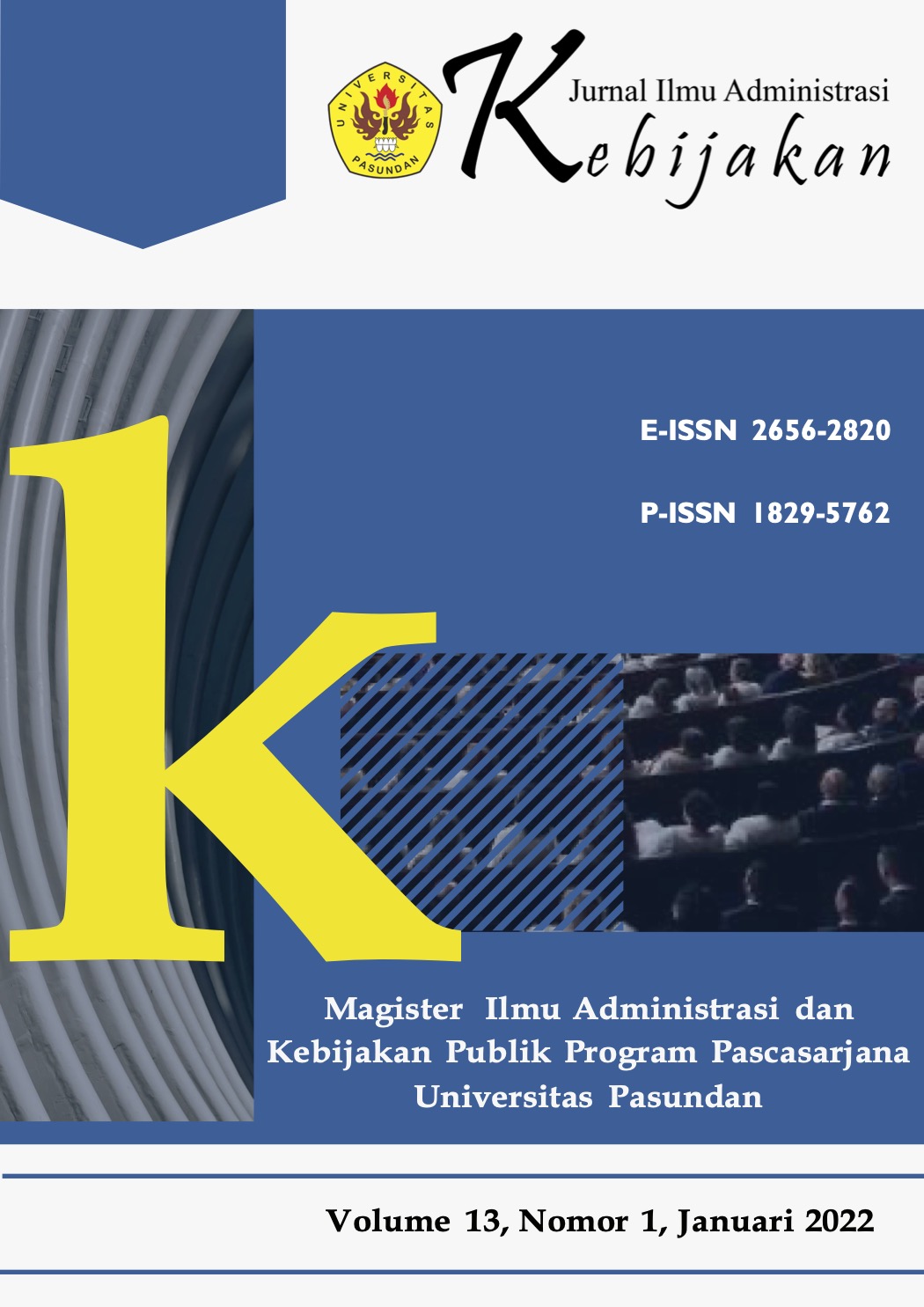DINAMIKA PELAKSANAAN ELECTRONIC GOVERNANCE PEMERINTAHAN DAERAH DI INDONESIA
DOI:
https://doi.org/10.23969/kebijakan.v13i1.5152Keywords:
E-Government, Internet, Public ServiceAbstract
Developments in the realm of information technology continue to change every year. The existence of the internet makes it easier for everyone to find something through their electronic devices, especially cellphones or computers as a medium. Internet users in Indonesia in the latest report, the number of internet users in Indonesia reached 202 million or 73.7% of the total population of 274.9 million in January 2021.
Almost all of the Indonesian population uses internet facilities, this has become an infrastructure for the community to reach the internet network. This condition is an opportunity for new media in a public service process carried out by the Indonesian government.
The existence of the internet and mobile computing in public service activities which are identical to the use of paper has now become a new era, namely paperless being one of the efficiency of public service activities. Existing resources in e-government activities are not only related to facilities and infrastructure, but also human resources of state civil servants need to have the ability to operate an e-government system that has been designed in such a way.
The progress of implementing e-government in Indonesia is faced with several challenges and still has shortcomings. These challenges and shortcomings include an equitable internet network infrastructure, human resources to operate features and services, and community culture related to digital literacy. There is still a need for improvement in the implementation of e-government in Indonesia in order to achieve excellent public services for the community.
Downloads
References
Dwiyanto, Agus. 2015. Manajemen Pelayan Publik: Peduli, Inklusif, dan Kolaboratif. Yogyakarta: Universitas Gajah Mada Press. Hal 14.
Erick S Holle. 2011. Pelayanan Publik Melalui Electronic Government: Upaya Meminimalisir Praktek Maladministrasi Dalam Meningkatkan Public Service. Jurnal Sasi Vol.17 No. 3
Forman, M. 2005. Using IT to Transform the Effectiveness and Efficiency of Government. Journal E-Government and Information Technology, Pg. 27.
Hartono, D.U. dan Mulyanto, E. 2010. Electronic Government Pemberdayaan Pemerintahan dan Potensi Desa Berbasis Web. Jurnal Teknologi Informasi (6) 1.
Mahmudi. 2010. Manajemen Kinerja Sektor Publik, Edisi. kedua. Sekolah Tinggi Ilmu Manajemen YKPN. Yogyakarta. Hal 22
Martin Albrow. 1989. Birokrasi. Yogyakarta. PT. Tiara Wacana.
Peoplesoft White Paper Series. 2001. Guideline for Building e-Government, Best Practices for eGovernment Implementations.
Putra, Fadhilla. 2012. New Public Governance. Malang: UB Press
Ratminto dan Atik Septi Winarsih. 2005. Manajemen Pelayanan. Yogyakarta: Pustaka Pelajar. Hal 246
Rukayat, Yayat. 2017. Kualitas Pelayanan Publik Bidang Administrasi Kependudukan Di Kecamatan Pasirjambu. Jurnal Ilmiah Magister Ilmu Administrasi (JIMIA) No.2 Tahun XI. Hal: 56-65
Sanapiah Azis. 2000. Pelayanan yang berorientasi kepada kepuasan masyarakat. Jurnal Administrasi Negara Vol 6 Nomor 1.
Sugiyono 2012. Memahami Penelitian Kualitatif Bandung: ALFABETA
World Bank. 2002. New Economy Sector Study, Electronic Government and Governance: Lesson for Argentina.
UU N0 25 Tahun 2009 Tentang Pelayanan Publik







